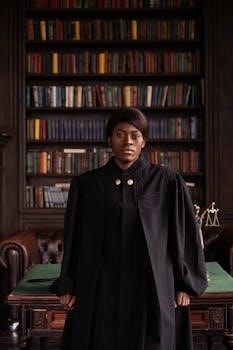A Gentleman’s Guide to Vice and Virtue⁚ A Comprehensive Overview
Mackenzi Lee’s novel plunges readers into the 18th century, following Henry “Monty” Montague on his Grand Tour. This journey through Europe evolves into a thrilling adventure filled with swashbuckling action, self-discovery, and exploration of progressive themes. It’s a historical fiction that blends humor and heart.
“A Gentleman’s Guide to Vice and Virtue” centers on Henry “Monty” Montague, a young, privileged English gentleman in the 1700s. Monty, known for his vices and bisexuality, is sent on a Grand Tour of Europe with his sister, Felicity, and his best friend, Percy, who harbors a secret crush on him. The tour, intended to be a final fling before Monty takes on his responsibilities, quickly spirals into chaos and adventure.
Their journey is far from a leisurely exploration of European culture; instead, it becomes a frantic chase involving pirates, alchemists, and long-lost family secrets. Monty’s pursuit of pleasure is constantly thwarted as he and his companions become entangled in a dangerous plot. Along the way, Monty grapples with his feelings for Percy, his strained relationship with his father, and his own identity.
Felicity, equally headstrong, seeks intellectual fulfillment and independence, challenging the societal norms of the time. Percy, burdened by a secret of his own, provides a moral compass amidst the chaos. The trio faces constant peril, forcing them to rely on each other and confront their deepest fears and desires. The novel is a witty, swashbuckling adventure that examines themes of identity, love, and societal expectations.

Main Characters⁚ Monty, Percy, and Felicity
At the heart of “A Gentleman’s Guide to Vice and Virtue” are three compelling characters⁚ Monty, Percy, and Felicity. Henry “Monty” Montague, the protagonist, is a young, bisexual English lord, known for his rebellious spirit and penchant for vices. He struggles with societal expectations and his own identity, embarking on a journey of self-discovery throughout the novel. Monty’s bisexuality is a key aspect of his character, adding depth and complexity to his relationships and internal conflicts.
Percy, Monty’s best friend, is a kind, intelligent, and loyal companion. He harbors a secret crush on Monty, adding a layer of romantic tension to their dynamic. Percy also deals with his own personal struggles, making him a sympathetic and well-rounded character. He serves as a moral anchor for Monty, often providing a voice of reason amidst the chaos.
Felicity, Monty’s sister, is a fiercely intelligent and independent young woman. She chafes against the limitations placed upon women in the 18th century and seeks intellectual fulfillment. Felicity is determined to pursue her own path, defying societal norms and expectations. Her ambition and determination make her a strong and inspiring character, rounding out the central trio.
Themes⁚ New Adulthood and Identity
“A Gentleman’s Guide to Vice and Virtue” explores the complex themes of new adulthood and identity through the experiences of its main characters. Monty, Percy, and Felicity are all on the cusp of adulthood, grappling with questions of who they are and what they want from life. The novel delves into the challenges of self-discovery, as the characters navigate societal expectations, personal desires, and the pressures of their privileged backgrounds.
Monty’s journey is particularly focused on his struggle with his identity as a bisexual young man in the 18th century. He confronts societal prejudices and internal conflicts as he comes to terms with his sexuality. Percy also grapples with his identity, dealing with a secret crush and his own personal aspirations.
Felicity’s storyline highlights the limitations placed on women in the 18th century, as she fights for her right to an education and a life beyond societal expectations. The characters’ individual journeys contribute to the overarching theme of self-discovery and the challenges of forging one’s own identity in a world that often seeks to define them. The novel ultimately celebrates the importance of embracing individuality and pursuing one’s own path, regardless of societal pressures.
The Grand Tour of Europe
The Grand Tour of Europe serves as a central element and a backdrop for the events that transpire in “A Gentleman’s Guide to Vice and Virtue.” This traditional journey undertaken by young, wealthy Europeans, particularly Englishmen, was intended to broaden their horizons through exposure to art, culture, and society. For Monty, Percy, and Felicity, however, the tour becomes far more than an educational excursion.
The journey begins with the intended purpose of instilling maturity and responsibility in Monty. He is expected to learn from the experience and prepare himself for his future role in society. Instead, the tour quickly spirals into a series of misadventures, fueled by Monty’s penchant for mischief and his desire to indulge in the vices that society warns against.
As they traverse through various European cities, the characters encounter new cultures, face unexpected dangers, and uncover long-held secrets. The Grand Tour becomes a catalyst for personal growth, forcing them to confront their own identities and challenge the expectations placed upon them. The journey is a symbol of their transition into adulthood, filled with both excitement and uncertainty. It represents the freedom to explore but also the responsibilities that come with it.

LGBTQ+ Representation
“A Gentleman’s Guide to Vice and Virtue” distinguishes itself through its prominent and positive LGBTQ+ representation, a rarity in historical fiction. The protagonist, Monty, identifies as bisexual, and his journey of self-discovery includes navigating his attractions and desires in a society that largely condemns same-sex relationships. His bisexuality is not merely a plot device but a fundamental aspect of his character, shaping his experiences and relationships.
The novel also features Percy, whose character contributes to the LGBTQ+ representation. Their relationship is a central focus of the narrative. The story explores the complexities of their connection amidst societal constraints and personal anxieties.
Mackenzi Lee handles these themes with sensitivity and nuance, offering readers a glimpse into the challenges faced by LGBTQ+ individuals in the 18th century while also celebrating their resilience and capacity for love. The representation extends beyond mere inclusion; it delves into the emotional and social realities of being queer in a historical context. The book offers a refreshing and empowering narrative for LGBTQ+ readers, providing a sense of visibility and validation often lacking in historical narratives.
Feminism and Progressive Ideals

“A Gentleman’s Guide to Vice and Virtue” subtly integrates feminism and other progressive ideals, challenging the conventions of its 18th-century setting. Felicity, Monty’s sister, embodies feminist ideals through her intellectual curiosity and determination to pursue a career in medicine, defying societal expectations that limit women to domestic roles. Her character actively resists the constraints placed upon her gender, seeking knowledge and independence in a patriarchal world.
The novel also touches upon issues of race and class, offering glimpses into the social hierarchies and inequalities of the time. While not the primary focus, these elements contribute to the book’s progressive stance, encouraging readers to consider the perspectives of marginalized groups. Monty’s own growth involves questioning his privileged status and recognizing the injustices around him.
Furthermore, the narrative promotes acceptance and understanding of diverse identities, challenging prejudices related to sexuality and gender. Through its characters and plot, the book advocates for empathy, tolerance, and the dismantling of oppressive social norms, making it a relevant and thought-provoking read for contemporary audiences.
Historical Context⁚ 18th Century England
“A Gentleman’s Guide to Vice and Virtue” is firmly rooted in 18th-century England, a period marked by rigid social hierarchies, burgeoning scientific inquiry, and the rise of the British Empire. The novel captures the opulence and privilege enjoyed by the aristocracy, contrasting it with the stark realities faced by the lower classes. The Grand Tour, a traditional rite of passage for young gentlemen, serves as a backdrop for exploring the cultural and intellectual landscape of Europe during this era.
England in the 1700s was also a time of significant political and social change. The Enlightenment’s emphasis on reason and individual liberty challenged traditional authority, while burgeoning trade and colonialism fueled economic expansion and social mobility. However, these advancements were often accompanied by exploitation and inequality, creating a complex and contradictory society.
The novel reflects these complexities by portraying characters who grapple with the constraints of their time while also embracing new ideas and possibilities. It offers a glimpse into the social customs, beliefs, and attitudes that shaped 18th-century English society, providing a rich historical context for the characters’ journeys and experiences.
Adventure and Swashbuckling Elements
“A Gentleman’s Guide to Vice and Virtue” isn’t just a historical novel; it’s a thrilling adventure story with plenty of swashbuckling elements. Monty’s Grand Tour quickly deviates from its intended purpose of refinement and education, spiraling into a series of daring escapades and perilous encounters. The trio finds themselves embroiled in chases, narrow escapes, and confrontations with formidable foes.
The narrative is punctuated by moments of high-stakes action, from sword fights and daring rescues to navigating treacherous landscapes and outsmarting cunning adversaries. These adventure elements inject a sense of excitement and danger into the story, keeping readers on the edge of their seats as Monty, Percy, and Felicity navigate the perils that come their way.
The novel’s swashbuckling spirit is further enhanced by its vibrant characters and witty dialogue. Monty’s impulsive nature and Felicity’s resourcefulness make them well-suited for a life of adventure, while Percy’s quiet strength and unwavering loyalty prove invaluable in moments of crisis. Together, they form a formidable team, ready to face any challenge that comes their way with courage and wit.
Romantic Relationships

The narrative of “A Gentleman’s Guide to Vice and Virtue” is intricately woven with threads of romantic relationships, adding depth and complexity to the characters’ journeys. Monty’s bisexuality is a central aspect of his identity, and his romantic pursuits form a significant part of the story. His feelings for his best friend, Percy, create a layer of emotional tension and longing throughout their adventures.
The novel explores the complexities of love, friendship, and desire in a time when societal expectations often clashed with individual desires. Monty’s internal struggles with his identity and his attraction to both men and women are portrayed with sensitivity and nuance.
Moreover, the romantic relationships in the story contribute to the overall themes of self-discovery and acceptance. As Monty navigates his feelings for Percy and other characters, he learns more about himself and what he truly desires in life. The novel celebrates the diversity of love and the importance of embracing one’s true self, regardless of societal norms. It’s a journey of finding love and acceptance.
Critical Reception and Awards
“A Gentleman’s Guide to Vice and Virtue” has garnered widespread critical acclaim since its release. The novel has been praised for its witty writing, engaging characters, and exploration of important themes such as identity, sexuality, and social justice. Critics have lauded Mackenzi Lee’s ability to create a compelling historical fiction that resonates with modern readers.
The book’s LGBTQ+ representation has been particularly praised, with many reviewers highlighting the importance of seeing diverse characters and relationships in young adult literature. The novel’s exploration of feminism and progressive ideals has also been commended, as it challenges traditional gender roles and encourages readers to question societal norms.
“A Gentleman’s Guide to Vice and Virtue” has received numerous awards and accolades, including being a Kirkus Prize nominee and a Stonewall Honor winner. It has also been recognized as a New York Times bestseller, further solidifying its place as a beloved and critically acclaimed novel. The positive reception and awards highlight the book’s impact and significance in contemporary literature. It’s a testament to its themes.
Discussion of Vices and Virtues
The title, “A Gentleman’s Guide to Vice and Virtue,” immediately sets the stage for an exploration of contrasting moral concepts. Monty, the protagonist, embodies this duality. He grapples with societal expectations of a “gentleman” while simultaneously indulging in what society deems vices. The novel questions whether these categories are truly distinct or if they can coexist, even complement each other.
Monty’s “vices,” such as his pursuit of pleasure and disregard for rules, often lead him into trouble. However, they also fuel his adventurous spirit and willingness to challenge societal norms. His “virtues,” like loyalty and compassion, are tested throughout the story. He learns that true virtue isn’t blind obedience but rather a conscious choice to do what is right, even when it’s difficult.
The other characters also embody their own sets of vices and virtues, creating a complex moral landscape; Percy’s quiet strength and Felicity’s intellectual ambition challenge traditional notions of virtue. Ultimately, the novel suggests that vices and virtues are not fixed traits but rather fluid aspects of human nature.